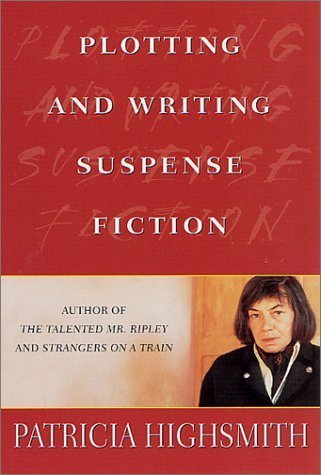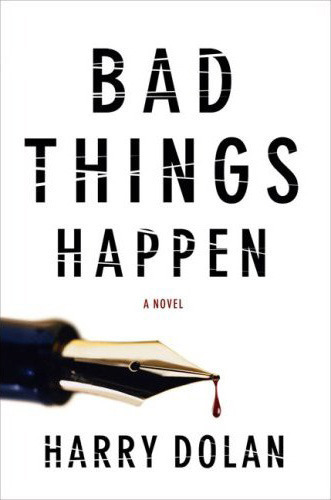Mark Stevens's Blog, page 54
November 6, 2011
Clark Lohr – "Devil's Kitchen"
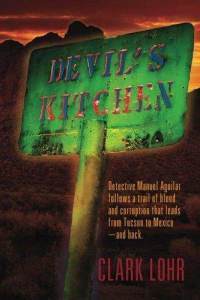 "Devil's Kitchen" is gritty, honest, grounded. Check the list of sources Clark Lohr used in research and you can tell why this tough story rings true. There's no gloss, no fluff. Detective Manuel Aguilar is leading the charge on this investigation and you can feel the work, the meaning of that word. Locating witnesses, checking paperwork, listening for lies. The case starts with a head (no body) in a landfill. The trail starts with faint clues.
"Devil's Kitchen" is gritty, honest, grounded. Check the list of sources Clark Lohr used in research and you can tell why this tough story rings true. There's no gloss, no fluff. Detective Manuel Aguilar is leading the charge on this investigation and you can feel the work, the meaning of that word. Locating witnesses, checking paperwork, listening for lies. The case starts with a head (no body) in a landfill. The trail starts with faint clues.
Lohr switches points of view here and there, but most of the time we are with Manny and we see how he engages others to help with the investigation. Manny is no Lone Ranger. "Devil's Kitchen" is well populated. That may sound like an odd point to praise, but Manny has an extended family in his personal life and relies on an interesting extended family at work, too. At the core of all the relationships is the one between Manny and his girlfriend Reina. The relationship lets us see Manny's likable heart. Their trust and connection is just as palpable as the rest of the story. Their bond has grit, too. Reina is sharp, knowledgeable and maybe a step or two ahead of Manny, helping him see a bigger landscape about how Arizona and its history of being exploited. She encourages Manny to look inside himself and tap his own intelligence. She's his spirit guide—"she's the light, this woman"— and it works. She knows literature, quotes Shakespeare and has a Robert Mapplethorpe photo of Patti Smith over her headboard. Reina's a winner and Manny's affection for her reflects well on him, too.
The writing is sharp but not flashy. Lohr slips in little gift images here and there. A Rotweiler is "friendly, quivering meatloaf of a dog." But most of the energy goes to the story and its forward motion. Lohr keeps events moving, but there's never a headlong rush, either. If anything, he lingers most as Manny and Reina exchange ideas, contemplate their lives. It's a tricky balance and Lohr nails it.
Early on, Manny makes a few mistakes. He's in the middle of a few too many "officer-involved" shootings. He's soon without badge but the investigation doesn't stop and soon Manny is making his way across and around the border country, which is run by its own rules. There is a trap, rattlesnakes and a well-orchestrated shootout. The developers and their "shady dealings" are exposed the well-drawn streets ofTucsonare completely alive and we are glad real people like Manny Aguilar are there to clean them up.
Filed under: Books








November 2, 2011
Craig Johnson – "Hell is Empty"
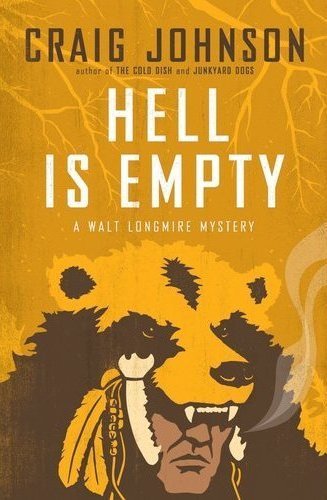 A moment of thanks to the narrators who spend countless hours, long days and endless weeks in a booth reading with an exquisite touch so my driving time means, quite simply, great entertainment. Stop for a moment and contemplate George Guidall: he's recorded over 900 unabridged books on audio. Over 900.
A moment of thanks to the narrators who spend countless hours, long days and endless weeks in a booth reading with an exquisite touch so my driving time means, quite simply, great entertainment. Stop for a moment and contemplate George Guidall: he's recorded over 900 unabridged books on audio. Over 900.
And "Hell is Empty" has to be one of his best. I don't know what the producers are going to do with the A&E television show that's in the works, but Guidall climbs inside Sheriff Walt Longmire's head and makes camp. He's got a bonfire going. It's going to be a long night. You just sit back and listen, stare into the embers and soak it in. You can almost hear the sips of whiskey as Guidall takes his time and as Longmire struggles with each new physical and mental challenge.
Guidall nails Longmire's burdens, heart, soul and voice.
"Hell is Empty" is one long slog up Cloud Peak in Wyoming. It's an extended chase scene disguised in the very loose form of a mystery novel. It's also an existential journey that touches on good and evil, life and death, dedications and obligations, mountain peaks of insight and the depths of misery. It's about confronting your demons, taking on your enemies.
To my tastes, "Hell is Empty" is more character study than tale of suspense but the slow-motion pursuit up this snowy, rugged peak certainly has its hair-raising moments. The effect is cumulative, however, and not about one moment or another.
As Longmire makes his way up the mountain, he faces multiple brushes with death and pushes his own physical limitations. But it's his conversations with Virgil White Buffalo that make "Hell is Empty" sing (and Guidall's slow baritone that makes it resonate). Virgil wears a bear head and cape, adding to the mysticism as they converse. Longmire once had Virgil White Buffalo in his county jail "when I'd mistakenly arrested him for the murder of a young Asian woman. He'd assisted me in apprehending the actual culprit but then had melted into the Bighorn Mountains."
In their first exchange, they are huddled in Virgil's high-up cave and Longmire asks how Virgil got the bear head and cape. Says Virgil: "He was a neighbor, but we ended up not getting along.'"
Virgil becomes Longmire's spiritual advisor, stoic cheerleader, all-knowing seer and spirit guide. "You have great sorrows burning in your heart," Virgil tells Longmire.
When Longmire asks if Virgil is "telling futures," Virgil replies: "I am. How do you like yours?"
The climb continues, the peak draws closer, the end is nigh. Along the way, Longmire consults a battered paperback copy of Dante's Inferno. Climbing higher as he probes the further depths of hell might be pushing the "corny" button but not in Johnson's capable, understated style. "Hell is Empty" is a pleasure to absorb.
The cold closes in, the light plays tricks. "There were shadows ahead, indistinct and nebulous, writhing with the flying snow. I tried to concentrate on the shapes, but as soon as I looked, they would swirl away and dissolve in the dark air."
I won't go on and on. I enjoyed "Hell is Empty" about as much as any mystery or other novel I've read in several years. I highly recommend Julia Buckley's interview with Craig Johnson for more insight about Johnson's approach: http://bit.ly/tN0tmH
And yes, have George Guidall tell you this story. It's killer stuff.
Filed under: Books






 [image error]
[image error]
October 27, 2011
Maximilian Werner – "Crooked Creek"
[image error]"Crooked Creek" inspires a bit of word association so here goes:
Rugged. Raw. Tough. Hard. Chiseled. Unsettling. Brutal. Serene. Chilling. Beautiful.
"Crooked Creek" is rich with language and imagery. It's a quick read but it forces you to slow down. It's episodic and carries a strong through-line. It arcs over generations. It's arty (and by that I mean, written with care) and yet unpretentious. The Ron Carlson quote on the back nailed it: "measured prose."
The opening paragraph gives a clue about the nature-laden story ahead. In four sentences, we get rain, aspens, a rabbit, alfalfa, barn swallows, bats, grass, a coyote, weeds and wood. And a boy. That pace never lets up—and neither does the ongoing study of men and women finding their way in nature, up against the brutal elements of Utah in the late 19th century. The story plays with time. Violence erupts when you don't really expect it, followed by moments of tranquility and beauty.
Werner sees everything—but it's really his characters are doing the seeing, or at least noticing. The writing carries you along. "Crows cawed in the trees like macabre fruit." "The coat's pewter buttons had sunk into the soft bone of the child's sternum and its hands lay at its sides like strange fossils of crabs." "All the while the far off clanking of a blacksmith's hammer divvied the silence and made audible the pulsing of the rubbish fires that burned high or low against the backdrop of the already dark eastern mountains."
The story follows a family on the run and trying to re-connect and re-establish their lives in a new land. We know it won't be easy. Nothing is. The family is disjoined, neighbors are suspicious and wary. Everything feels transient except the rocks and mountains. "The two men had had their share of hard words over the years, and even now their disagreements over the land and how to live on it hung between them like smoke in the air and these troubles would outlive them both."
There are guns and rifles and the weapons are an extension of all the human traits—including carelessness, hate and distrust. As Werner tells us so simply, to confront a strange land is also to confront the strangeness of the self.
Filed under: Books

 [image error]
[image error]



 [image error]
[image error]
October 24, 2011
Michael Harvey – "We All Fall Down"
Thanks to Mystery Scene magazine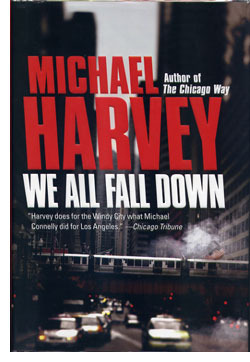 (love that publication) I recently learned that Eric
(love that publication) I recently learned that Eric
Ambler's "The Dark Frontier," his first novel, included anticipation of the atomic bomb. "The Dark Frontier" was written in 1936.
Quoting from a 2005 review on Amazon: "It stars an unlikely secret agent, Professor Barstow, a middle-aged and overworked physics professor, who turns into Conrad Carruthers, debonair agent determined to stop nuclear proliferation." The same review said "The Dark Frontier" is part "great spy story" and part adventure story. The reviewer offered up four stars.
Michael Harvey might be just as prescient. It's easy to believe we'll encounter something along the lines of the citywide attack he imagines in "We All Fall Down." Harvey's concern is biological weapons. In the author's note to "We All Fall Down," he quotes scientists and experts (without naming names) who say the biological weapon scenario he envisions—or something even more frightening—is plausible.
For me, however, the mash-up of mystery and sci-fi/thriller doesn't quite work. The story felt like Michael Connelly stirred with Michael Crichton or Elmore Leonard (Detroit-era Leonard) crashed into the movie "Contagion." Dope peddling bad guys in one scene, talk about black biology and released pathogens in the next.
One line of narration straight out of an urban crime novel: "Marcus climbed down the fire escape and sat with his back against the building. He pulled seven bullets out of his pocket, loaded four into the revolver, and clicked the chamber shut. He'd only had the gun a week when he and Twist found the dead doper, curled at the edges and lying in the basement of a rock house."
And another out of a sci-fi thriller: "I pushed down on the second button. Images of scientists in suits collecting samples appeared on the upper quarter of my visor."
One line of dialogue out of an urban crime novel: "Tell him the Korean's out. Your crew's gonna be dealing directly with us for product."
And another line of dialogue out of a sci-fi thriller: "Scientists work with something called BioBricks—very specific strings of DNA with defined functions. An example might be a BioBrick that represents the molecular expression of the lethal properties of bubonic plague."
The combination left me unfocused. I had a hard time believing PI Michael Kelly would be given such a huge role in protecting and assisting with the subway tunnels that are the focus of the black biology portion of this story.
One other minor complaint is the shift from third person to first and then, on top of that, the story is told from multiple points of view. (I'm usually a fan of multiple points of view but the switches on first- and third-person too just left me jarred.)
That said, Harvey can certainly write. There is energy, imagination and sharp dialogue here in abundance. I thought the connection to the Greek writer Thucydides was a good touch. And it's easy to be deeply troubled by Harvey's scenario here. Easy. Please don't share your copy with the bad guys.
I gave "The Chicago Way" five stars after I read it last year. ("…a pretzel bag full of salty twists and pages of quick, sharp dialogue.")
Here, Harvey continues to tap the style of Chandler and Cain, two of my favorites.
But "We All Fall Down" made me yearn for more time with Kelly's pure PI instincts and the real streets and current threats of Chicago.
Filed under: Books

 [image error]
[image error]
 [image error]
[image error]
[image error]
[image error]


October 18, 2011
Patricia Highsmith (This Sweet Sickness)
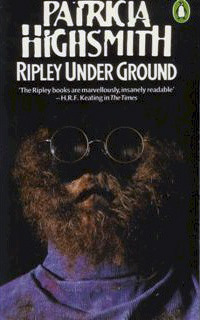 Patricia Highsmith's works are dark, edgy and occasionally disturbing. No writer I've ever experienced has given me the willies—the I'm really worried now vibe—quite like her.
Patricia Highsmith's works are dark, edgy and occasionally disturbing. No writer I've ever experienced has given me the willies—the I'm really worried now vibe—quite like her.
"Strangers on a Train." "The Talented Mr. Ripley." "A Suspension of Mercy." "This Sweet Sickness." And many more.
I bring her name up in writing circles and usually get a blank stare, until I mention the titles that have made the transition to movies. Then the look is along the lines of "oh, you must like really warped stuff." (Why "A Suspension of Mercy" has never reached film status is beyond me—it's a wonderfully tense story.)
Highsmith's heroes aren't likable, it's true. They are obsessed with their needs and desires. Of course, Patricia was also self-absorbed. I've read both major biographies of [image error]Highsmith and her ability to stay self-absorbed and also tap that inner well for her fiction is, to my mind, a towering achievement.
Joan Schenkar, who wrote the more detailed of the two biographies, said Highsmith "is our most Freudian novelist." I have to agree. Highsmith's works find their way into your bones, your soul and down deep in the visceral guts of your psyche. My wife says she's the only writer who has given her nightmares.
Highsmith also wrote a terrific book about how she did
it: "Plotting and Writing Suspense Fiction."
In it, Highsmith confesses in the preface it is not a how-to-do-it handbook. It is, she says, "impossible to explain how a successful—that is, readable—book is written. But this is what makes writing a lively and exciting profession, the ever-present possibility of failure."
 That's a typical Highsmith take on her craft, dwelling on the dark side.
That's a typical Highsmith take on her craft, dwelling on the dark side.
In "Plotting and Writing…" Highsmith focuses on miscues in attempt to save writers from suffering the same errors. I highly recommend this book to all
writers of suspense, mystery and thrillers. I think her tips would apply to anyone who wants more tension for any reason in science fiction, dystopia, YA, paranormal or straight-up serious Iowa Writers Workshop level serious fiction. She might have something you can use to shade, darken and enrich your story. All genres (and non-genres) need tension and Patricia Highsmith knew a thing or two about conflict and making a reader squirm.
A few of my favorite lines and ideas from her book:
On finding ideas: "Some young writers drive themselves too hard, and in youth this works quite well, to a point. At that point, the unconscious rebels, [image error]the words refuse to come out, the ideas refuse to be born." So don't surround yourself with the wrong kind of people, she advises, "or sometimes people of any sort. People can be stimulating, of course, and a chance phrase, a piece of a story, can start the writer's imagination off. But mostly, the plane of social intercourse is not the plane of creation, not the plane on which creative ideas fly. It is difficult to be aware of, or receptive to, one's own unconscious when one is with a group of people, or even with a single person, though that is easier."
On growing that idea: "The developing of an idea is often not at all logical, and there is such an element of play in it. I can't call the process a serious activity, thought it may involve spots or hard thinking. It is still part of a game. Writing fiction is a game, and one must be amused all the time to do it."
On bad guys: "…I rather like criminals and find them extremely interesting, unless they are monotonously and stupidly brutal. Criminals are dramatically interesting, because for a time at least they are active, free in spirit, and they do not knuckle down to anyone."
On being in tune with your work: "Good books write themselves, and this can be said from a small but successful book like Ripley to longer and greater works of literature. If the 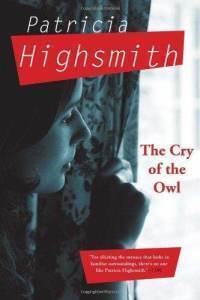 writer thinks about his material long enough, until it becomes a part of his mind and his life, and he goes to bed and wake ups thinking about it—then at last when he starts to work, it will flow out as if by itself."
writer thinks about his material long enough, until it becomes a part of his mind and his life, and he goes to bed and wake ups thinking about it—then at last when he starts to work, it will flow out as if by itself."
On liking your characters: "It is skill that makes the reader care about characters. It must start with the writer caring. This is much of what that rather stuffy word 'integrity' is about. Good hack writers may not care a damn, and yet through their skillful methods give an illusion that they do, and furthermore convince the reader that he cares, too. To care about a character, hero or villain, takes time and also a kind of affection, or better said, affection takes time and also knowledge, which takes time, and hack writers don't have it."
I'm writing this to jot down a few key ideas for myself and also to highlight what I think is increasingly rare: a writer tapping his or her soul and then driving those emotions into the work, the art. I highly recommend this book, but not for the nuts-and-bolts diagram stuff of "plotting and writing," but a peek into the messier stuff—the motivations and inspirations—and how to tap those veins in the name of suspense.
Filed under: Books








October 15, 2011
R. J. Rubadeau
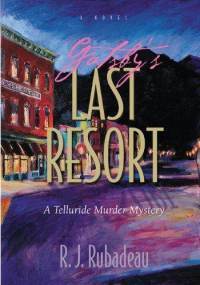 "Gatsby's Last Resort" is the story Carl Hiaasen might have written if he
"Gatsby's Last Resort" is the story Carl Hiaasen might have written if he
abandoned his beloved beaches and quirky sun-splashed state of Florida and moved to the mountains and quirky tucked-away town of Telluride, Colorado.
Let's just cut to the chase: the thin air is taking its toll. Or maybe it's the excess wealth washing around the town, or the infestation of self-important, self-absorbed citizens who have plenty of time for various forms of shenanigans and hanky-panky, all of which give The Last Resort Detective Agency plenty of fodder for potential income.
Wit Thorpe is the LRDA's brain trust and, well, that means trouble right there. "Idiot is my middle name," he explains. "Wilford I. Thorpe was the birth record legacy handed down from my long departed father…It still enrages the bigots in the Four Corners area that a half-breed Ute would carry a moniker that suggests he is ironic and funny at the same time. Enraging bigots is the second best thing I do."
Wit's team includes his pre-teen daughter Cody, a wealthy barber and several other "under-employed locals." In the main action of "Gatbsy's Last Resort," Wit bounces from spats over spouses and houses, running into and skewering a variety of colorful local characters. Does it help that he's married to the local district attorney? Probably not.
The writing captures the town's enigmatic essence and follows Wit around Telluride and other corners of southwest Colorado, including to nearby Paradox, where he visits a watering hole tended by a Yugoslavian (yes, not Irish) named Mick. "The dust lay thick in the shadows of the bar. Harsh slivers of sunlight from the windows exposed the old tables and mismatched wood chairs scatted about the undulating riprap of scarred and battered, pastel-tinted linoleum. Hot, high plains desert waited just outside the heavy metal door. Melancholy was not exactly the right word to describe the mood. I searched for a substitute. Pride in my vocabulary was one of my many faults. Glum might be the word I was looking for."
Because, of course, Wit is also obsessed with writing. He's working on a short story that seeks to invoke the spirit of F. Scott Fitzgerald crossed with a classic noir vibe. Long sections of that work in progress are interspersed with the main action of "Gatsby's Last Resort" and let's just say the steam factor rises in these well-done passages. (The short story sections show Rubadeau's real talents—the style here is distinct from the main action.) The two strands intertwine as the "sudden apparition" of a main character from his story sachets into Wit's world.
Complicated? Not at all. "Gatsby's Last Resort" is refreshing, colorful, edgy, racy and fun. The jokes fly, the intrigue increases and Wit pursues his case and his craft with his own bumbling, spirited determination. Here's hoping "Gastby's Last Resort" is the start of a long-running series.
Filed under: Books

 [image error]
[image error]
[image error]
[image error]
[image error]
[image error]

 [image error]
[image error]
October 10, 2011
Margaret Coel
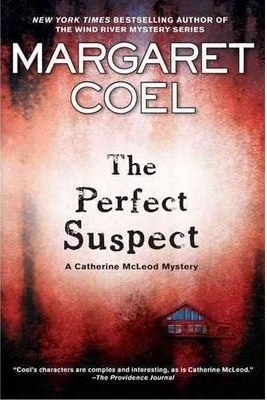 Margaret Coel is known for her Wyoming-based "Wind River" mystery series. "The Silent Spirit." "Drowning Man." "The Eye of the Wolf." "Wife of Moon." "Killing Raven." And many more.
Margaret Coel is known for her Wyoming-based "Wind River" mystery series. "The Silent Spirit." "Drowning Man." "The Eye of the Wolf." "Wife of Moon." "Killing Raven." And many more.
The way Tony Hillerman put a stamp on New Mexico with Jim Chee and Joe Leaphorn, Margaret Coel put a stamp on Wyoming. Hillerman brought us the Navajos through the mystery format (and so much wry, spare humor he is virtually in a class by himself) and Coel brought us the Arapahos. She was writing Wyoming country long before C.J. Box and Craig Johnson.
So who can begrudge her a chance to stretch her writing chops with the new Catherine McLeod series, about an investigative reporter in Denver? "Blood Memory" came out in 2008 and now Catherine is back.
"The Perfect Suspect" is a clean, quick-moving thriller. Yes, we know who did it before our credit card is swiped at the check-out stand. Ryan Beckman is a female Denver detective with a dicey set of problems, including having shot and killed her boyfriend, an up and coming politician. McLeod squirms, fights to be heard among her fellow investigators, avoids danger, sees through a frame job. As Beckman notes, McLeod is "edgy and distrustful." She operates "on instincts that defied logic." She is one of those "intuitive types."
McLeod leans on all her intuition, follows every instinct. If there's a category called "thriller cozy," this might be it. There are deaths but Coel doesn't linger over the blood and guts. She's more interested in what McLeod is thinking, how she processes information. You don't get Coel's trademark doses of American Indian history and culture here, of course. The setting here is Denver but any modern American city would work. Even as McLeod analyzes, "The Perfect Suspect" is 90 percent breezy plot. Events crank along at a nifty clip. This isn't cat-and-mouse, it's cat-and-cat. (There are multiple points of view, all female.) At the end, the snarls turn wicked, claws out. Right down to the last.
Filed under: Books








October 7, 2011
Ted Conover
Human disasters wash over us. Tsunamis, earthquakes, hurricanes, famine. We stare at the images on television, write some checks. We move on. What's next? 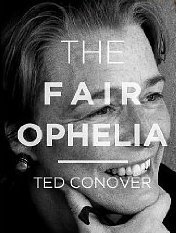 From time to time I tell people I covered the 1985 Mexico City earthquake that killed 10,000 people (maybe 15,000—estimates vary) and they blink and stare. That was so many tragedies ago.
From time to time I tell people I covered the 1985 Mexico City earthquake that killed 10,000 people (maybe 15,000—estimates vary) and they blink and stare. That was so many tragedies ago.
Some rush in to help. Some (celebs?) make a splash. Some come and go. And others stay. Ophelia Dahl and Partners in Health are there for the long haul. Their mission is, quite simply, to do "whatever it takes."
From the PIH web site: "When a person in Peru, or Siberia, or rural Haiti falls ill, PIH uses all of the means at our disposal to make them well—from pressuring drug manufacturers, to lobbying policy makers, to providing medical care and social services. Whatever it takes. Just as we would do if a member of our own family—or we ourselves—were ill."
In this slim, tantalizing profile "The Fair Ophelia," Ted Conover gives us a glimpse of the woman who leads this unflappable organization—one that, as Conover puts it, has "challenged the world's public health experts to recalibrate notions of what's affordable or reasonable for the poor, asserting, in so many words, that we can do a whole lot better."
"The Fair Ophelia" begs for a full book. We get Conover's trademark eye for detail—the string between a Haitian child and a kitten's neck, the pink paisley bandana on the head of an anesthetist with a dark mustache. We get Conover's inviting prose, which opens the door to a story in such an easy way that we feel welcomed and placed smack in the scene itself.
But these staccato moments are a tease. We learn about Ophelia Dahl's parents—children's book author Roald Dahl and actress Patricia Neal. We get a taste of Ophelia's upbringing and a quick glimpse at the relationship between Ophelia and Paul Farmer, who is PIH's "public face." We get a sense of the cult-like staff that surrounds Ophelia and a sense of how the organization functions but, like how all good journalism, we want more.
Let's hope that's in the works. In the meantime, for $.99 we get a Kindle-only "single" and a taste for the leadership and personal style of this unique figure. I'd gladly pay more for a full "LP."
Ophelia Dahl is out there on the fine line between life and death in the battles over public health in desperate communities around the world where "to be, or not to be" isn't within each individual's personal control. Ophelia Dahl and PIH are saying, it's up to us.
(Yes, Ted Conover is a friend. I stand by every word.)
Filed under: Books








October 4, 2011
Dean Koontz
"The Wizard of Oz" is paranormal storytelling, right?
"Harry Potter" and "The Fall of the House of Usher," too.
 Paranormal "designates experiences that lie outside the range of normal experience or scientific exploration (Wikipedia)."
Paranormal "designates experiences that lie outside the range of normal experience or scientific exploration (Wikipedia)."
Para = besides and/or "at the side of," in this case, normal.
And you certainly wouldn't classify The Emerald City, Hogwarts or the Usher abode as normal. But I can buy into all three examples of these "paranormal" fictions.
(Okay, the truth: not so much with Harry Potter. To me, the series is a good demonstration of the fact that not all great stories require good writing.)
Which brings me to Dean Koontz. A good friend said try "The Bad Place." I have enjoyed a bit of Koontz and I have to say "The Bad Place" starts strong.
Sure, there was some whacky stuff going on—a frightened, spooked-out Everyman (Frank Pollard) who has no idea what happens to him when he sleeps. I really didn't know Koontz could portray relationships so well and I was pulled into the bond between married detectives Julie and Bobby Dakota. To add to the surprise, a sensitive portrayal of Julie's younger brother Thomas, who has Down's syndrome.
And then, about two-thirds of the way through "The Bad Place," I felt like I was run off the rails. The story grew, well, too paranormal. Was it the giant spiders? The bizarre stacks of cash? The red diamonds? The telepathic bridges? Close to the end, the sexual mutations of the bad guy and his family just left me thinking one thing: ugh.
A bit of "Twilight Zone," a touch of "The Outer Limits" and a dash of "The Time Tunnel" and off we go.
Maybe a tad spooky, a little weird…but hardly scary.
Wish I knew why I "buy" some paranormal and shake my head at others. I'm not sure I understand the craze. I think it has something to do with the characters staying grounded, staying human, staying real. I wish "The Bad Place" had stayed closer to ground, not quite so "para."
Filed under: Books








September 29, 2011
Harry Dolan
One word came to mind reading Harry Dolan's prose:
Okay, another: straightforward.
And that's not to say it's not powerful.
"Bad Things Happen" is pulled-tight, clenched jaw stuff.
There's a lot to like here, particularly the idea of setting a murder mystery in and around the staff of a mystery magazine, Gray Streets.
The start provides a genuine jolt; one of the best three-page hooks you'll come across.
I loved some of the character names, but don't ask me why. Elizabeth Waishkey is a name developed by an author who likes odd monikers and wants them to stick. Bridget Shellcross, another. Michael Beccanti. Valerie Calnero. Cassimir Hifflyn.
David Loogan is another but it's special for its own reasons. I'm not giving anything away here.
And then there's the writing. I searched high and low for a bit of poetry, some imagery like they teach in the fancy writing schools. Not much, not here. A sample:
"The door to Bridget Shellcross's townhouse had been answered by a woman with a pageboy haircut. She was tall and athletic and dressed for a workout; her bare arms were well toned. She led Elizabeth to a sitting room decorated with designer furniture: squarish shapes in leather with bands of dark wood and burnished metal."
This is as dry as Raymond Carver (and kind of refreshing in its own way). There's nothing forced here. It works. Dolan never strays from his style.
I thought there were too many scenes where characters sat around imagining various "what if" scenarios to think about who might have killed whom. (Yes, more than one.) And I'm not a big fan of confessions/back stories while the guns are drawn but before the final shoot-out (so to speak) but in "Bad Things Happen" the dark, dry vibe is relentless and it will draw you in.
Filed under: Books









